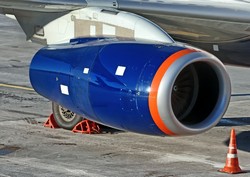Shape-adaptive technology for aircraft engine nacelles
The Advisory Council for Aviation Research and Innovation in Europe (ACARE) has set ambitious goals for a significant reduction of carbon dioxide emissions and noise as well as improved efficiency and economics. Because established technologies are reaching their limits, new approaches are being explored. Inspired by nature, adapting aerodynamic shapes to changing flight conditions offers a means to achieve these goals. An aircraft component that is highly influenced by the operating condition is the nacelle inlet of a turbofan engine. The inlet supports constant uniform air flow that is passed to the combustor. The EU-funded MORPHELLE(opens in new window) (Morphing enabling technologies for propulsion system nacelles) project set out to investigate new morphing technologies for nacelle inlets. Achieving smooth shape based on elastic materials that can resist aerodynamic loads was one of the main challenges that researchers addressed. Reinforcement of nacelle materials enabled them to be stiff enough to withstand high aerodynamic loads while allowing possible shape changing. A promising material for the inlet lip was an elastomer reinforced with a metal mesh that, except for being stiff, allows large shear deformation. The nacelle supporting structure comprised a number of pressurised fabric-reinforced tubes and a deformable auxetic core. MORPHELLE placed major focus on adapting the nacelle inlet shape to multiple flight conditions for improved aerodynamic performance. One of the project's primary objectives was to identify requirements for shape adaptation and morphing technologies for different flight conditions. Researchers devoted significant efforts to investigate the optimal nacelle inlet design for cruise and close-to-the-ground conditions through numerical simulations. The simulation results served as input for an aircraft assessment. Additional inputs were nacelle weight, nacelle aerodynamic drag and thrust-specific fuel consumption of the aircraft engine. With this data, an aircraft model was set up and compared to two reference aircraft. The adaptive MORPHELLE nacelle showed improved values and nacelle aerodynamic drag and fuel consumption compared to the reference nacelle geometry. Importantly, a prototype of the adaptive shape mechanism was developed as proof of concept.



